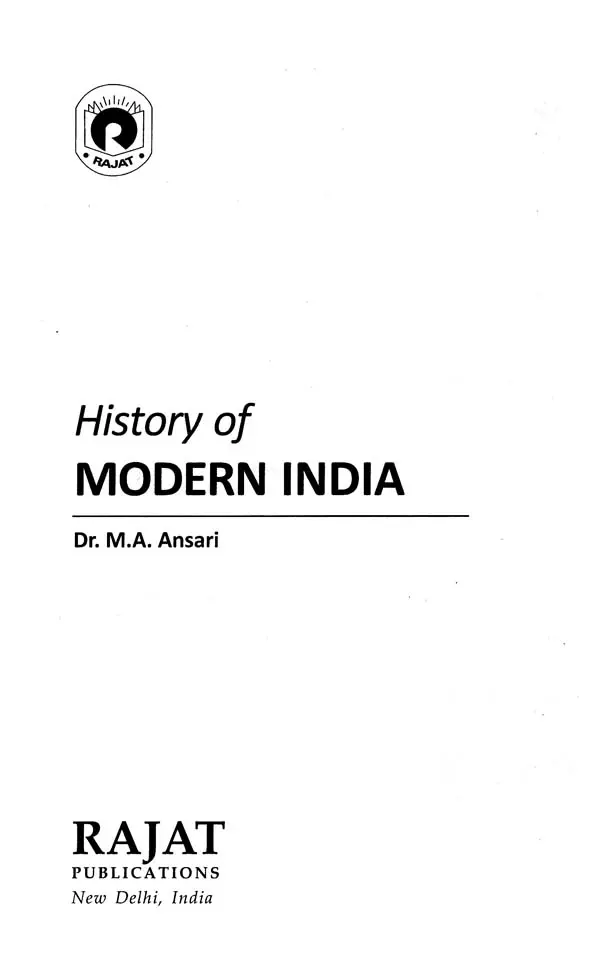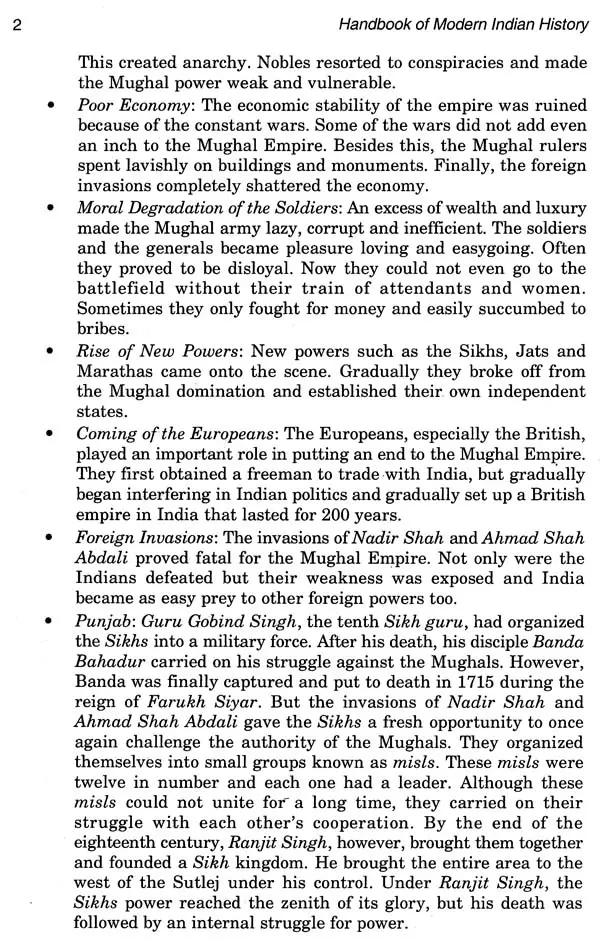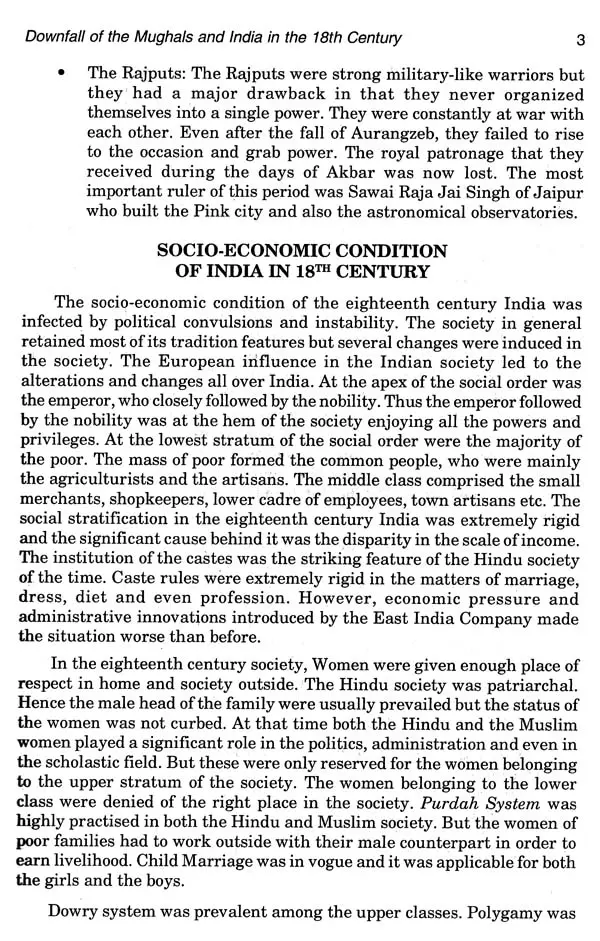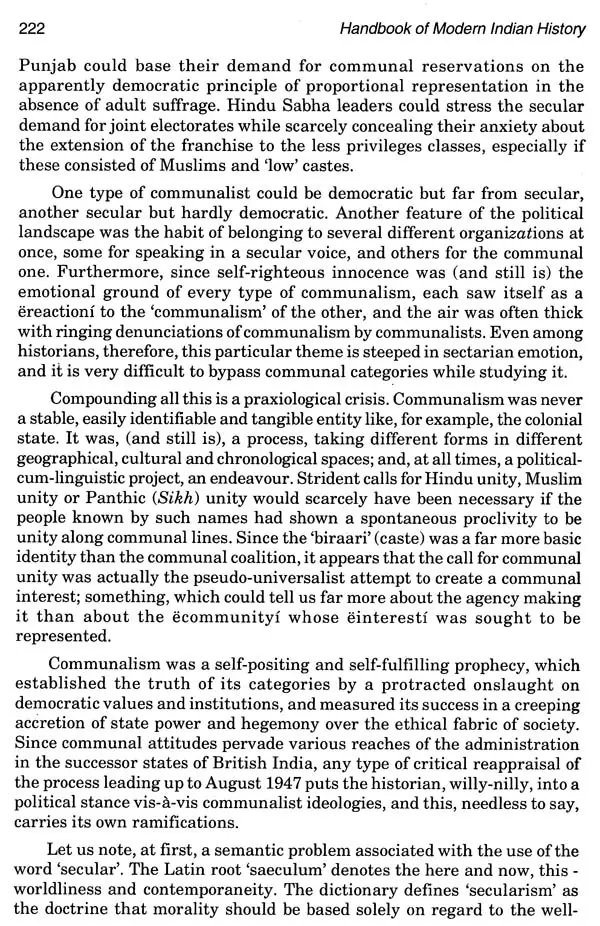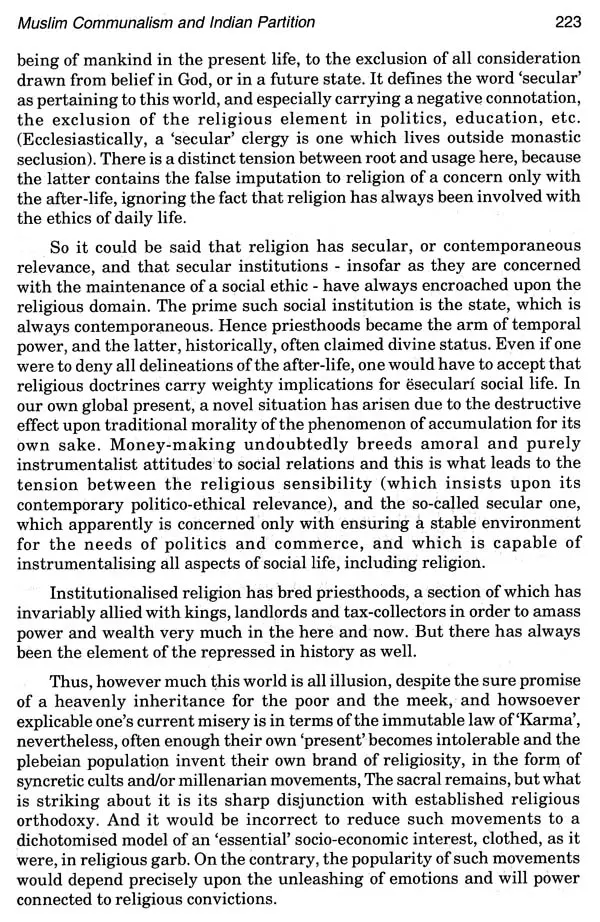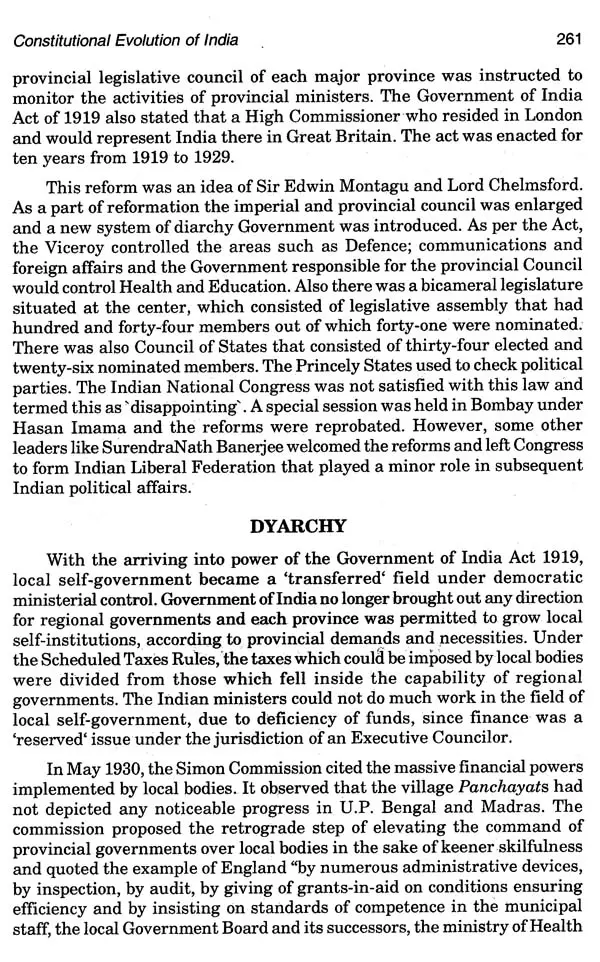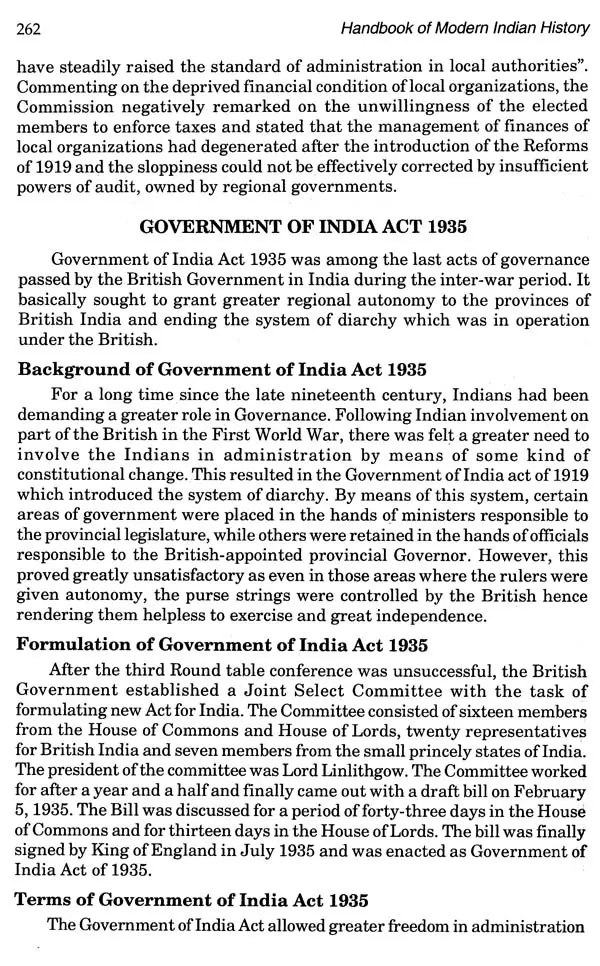
History of Modern India
Book Specification
| Item Code: | UBA027 |
| Author: | M. A. Ansari |
| Publisher: | Rajat Publications, Delhi |
| Language: | English |
| Edition: | 2022 |
| ISBN: | 9788178807171 |
| Pages: | 292 |
| Cover: | HARDCOVER |
| Other Details | 9.50 X 6.50 inch |
| Weight | 480 gm |
Book Description
Modern phase of Indian history starts from the downfall of Mughals and avent of European powers in India. Various factors caused the eclipse of Mughal empire which include Aurangzeb's responsibility, weak successors, poor economy, moral degradation of soldiers, rise of new powers e.g. Jats, Sikhs, Marathas and Rajputs and foreign invasions etc. Simultaneously, the socio-economic condition of the eighteenth century India was infected by political convulsions and instability. The society in general retained most of its tradition features but several changes were induced in the society. The European influence in the Indian society led to the alterations and changes all over India. At the apex of the social order was the emperor, who closely followed by the nobility. Thus the emperor followed by the nobility was at the hem of the society enjoying all the powers and privileges. At the lowest stratum of the social order were the majority of the poor. The mass of poor formed the common people, who were mainly the agriculturists and the artisans. The middle class comprised the small merchants, shopkeepers, lower cadre of employees, town artisans etc. The social stratification in the eighteenth century India was extremely rigid and the significant cause behind it was the disparity in the scale of income. The institution of the castes was the striking feature of the Hindu society of the time. Caste rules were extremely rigid in the matters of marriage, dress, diet and even profession. However, economic pressure and administrative innovations introduced by the East India Company made the situation worse than before. As is suggested by the name of the title, this book encompasses vital information on the history of modern India. All major developments, events etc. are given elaborate treatment. This presents the historical journey of India after closing of medieval period to the advent of a sovereign and independent democratic state of India.
Dr. M.A. Ansari earned his M.A. and Ph. D. in history from Kanpur University and Agra University respectively. After a brief stint at a govt. department he joined U.P. higher Education and taught the subject at under graduate and post graduate levels in many Government Colleges in the state. He served in many University departments as guest faculty. Dr. Ansari has participated in many national and international seminar and conference. He also supervised twelve scholars for their doctoral research.
Modern phase of Indian history starts from the downfall of Mughals and avent of European powers in India. Various factors caused the eclipse of Mughal empire which include Aurangzeb's responsibility, weak successors, poor economy, moral degradation of soldiers, rise of new powers e.g. Jats, Sikhs, Marathas and Rajputs and foreign invasions etc.
Simultaneously, the socio-economic condition of the eighteenth century India was infected by political convulsions and instability. The society in general retained most of its tradition features but several changes were induced in the society. The European influence in the Indian society led to the alterations and changes all over India. At the apex of the social order was the emperor, who closely followed by the nobility. Thus the emperor followed by the nobility was at the hem of the society enjoying all the powers and privileges. At the lowest stratum of the social order were the majority of the poor. The mass of poor formed the common people, who were mainly the agriculturists and the artisans. The middle class comprised the small merchants, shopkeepers, lower cadre of employees, town artisans etc. The social stratification in the eighteenth century India was extremely rigid and the significant cause behind it was the disparity in the scale of income. The institution of the castes was the striking feature of the Hindu society of the time. Caste rules were extremely rigid in the matters of marriage, dress, diet and even profession. However, economic pressure and administrative innovations introduced by the East India Company made the situation worse than before.
As is suggested by the name of the title, this book encompasses vital information on the history of modern India. All major developments, events etc. are given elaborate treatment. This presents the historical journey of India after closing of medieval period to the advent of a sovereign and independent democratic state of India.
